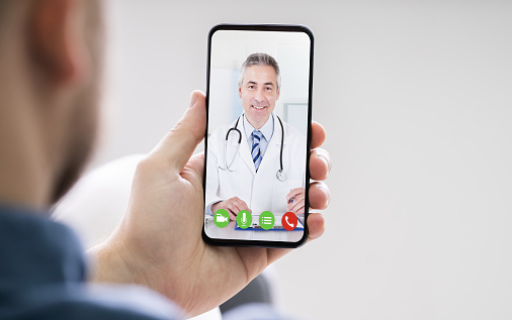Exploring The Three Different Types Of Telemedicine
Health is the greatest asset an individual has. By the use of telemedicine, solving health-rated problems becomes more accessible than ever. When it comes to telemedicine, there are three types.
Each of these types plays a significant role in improving the overall link and relationship between patients and healthcare workers. By making use of telemedicine, you can inherently enhance the quality of a healthcare system. 
The Three Different Types Of Telemedicine
We have described the three different types of telemedicine below.
Store-and-forward telemedicine does not require a medical practitioner to see a patient in person. Relevant data that the doctor might need to assess the patient’s health condition can be sent to the doctor as per requirements.
The data may include scans, reports, and other images that give a complete picture of the patient’s status. This type of telemedicine is commonly practiced in the fields of radiology, dermatology, and pathology.
By using an appropriate structure and caring system, the store-and-forward technique can save time. Moreover, it lets healthcare practitioners serve the community with their noble services in a much more organized manner.
However, there is one drawback. The conclusion and diagnosis given by the practitioner are based on a history report and other data such as images. It does not include a physical examination. Hence, there is a great chance of complications occurring.
This type of telemedicine is also called self-monitoring or self-testing. The remote monitoring method makes use of various technological devices that can help look after the health and clinical signs of a patient remotely.
This type of telemedicine is often used while managing chronic diseases such as cardiovascular disease, asthma, and diabetes mellitus.
Remote monitoring is a cost-effective way for patient care. It has a much more frequent monitoring system with an even better patient satisfaction result. However, tests conducted by the patients themselves might be inaccurate. But in most cases, the resulting outcome is the same as tests run by professionals.
Interactive services are an optimal choice of telemedicine for patients who require immediate medical attention. For entertaining real-time interactive services, various mediums can be used. These include online communication, phone, and home visits.
A medical history, along with consultation that explains the presenting complaint, can be recorded. An assessment can be performed after this, which is similar to face-to-face appointments.
This is a much more transparent type of telemedicine. It becomes convenient to ask and answer follow up questions. The practitioner can better understand the status of the patient. Whereas, the patient also feels much more content about the medical advice being imparted to them.
No matter what three different types of telemedicine are being used, the ultimate goal remains the same. And that goal is to improve the overall healthcare system while building a relationship of trust between the patients and practitioners.




